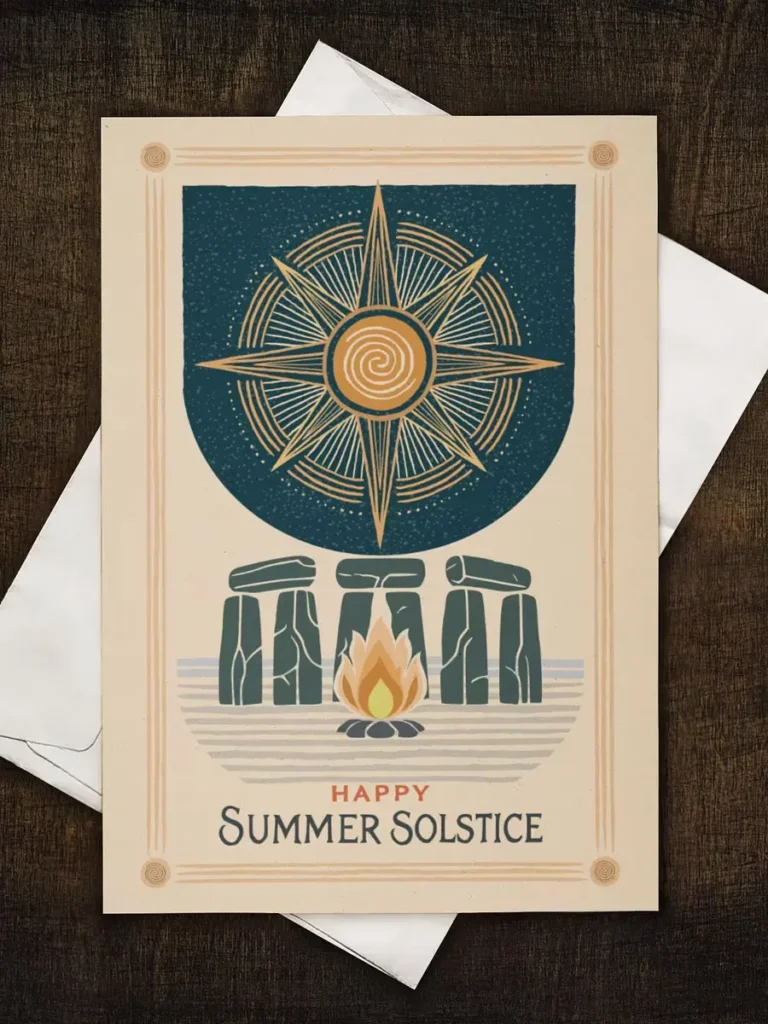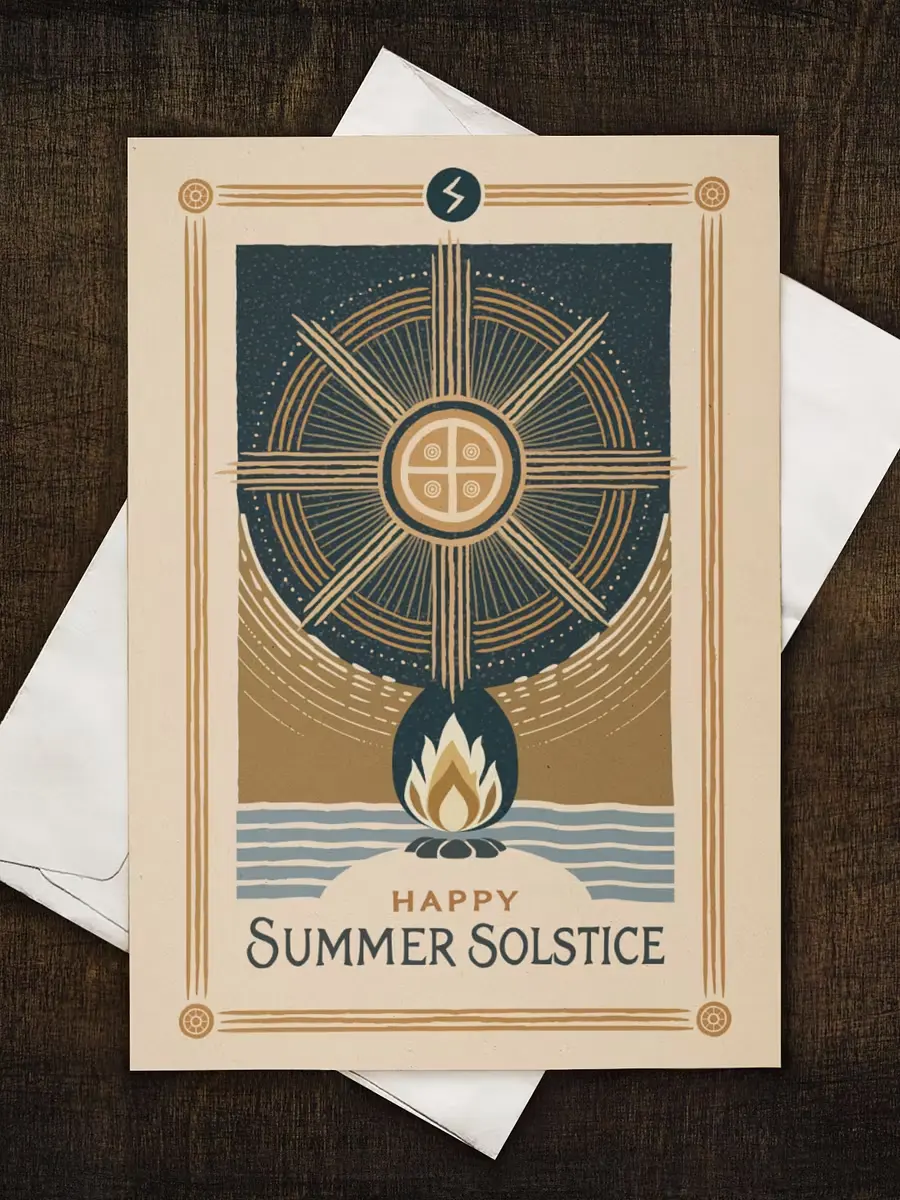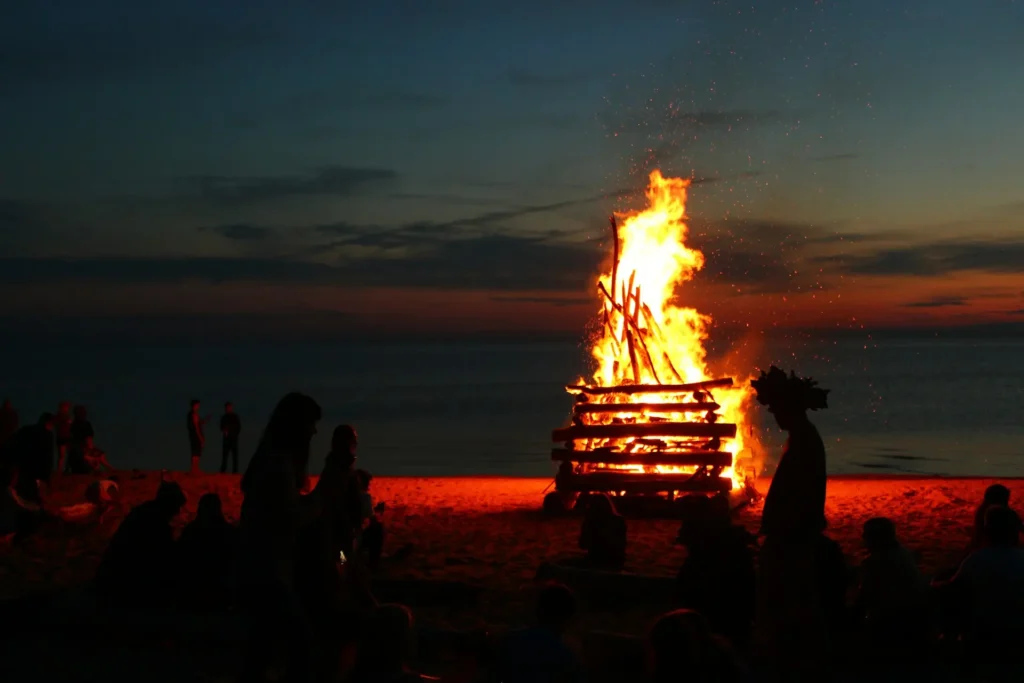Your basket is currently empty!
Celtic Summer Solstice: Ancient Traditions & Modern Revival
The summer solstice (when the sun reaches its highest point in the sky) has long been a time of celebration. While ancient cultures like the Romans or the Norse left behind detailed records of Summer Solstice festivals, the Celts didn’t. Still, clues from archaeology, mythology, and folklore help us piece together how important this turning point of the year may have been to them.
Let’s explore what we know about summer solstice celebrations in Celtic lands and how these ancient rhythms continue to echo today in modern pagan traditions like Litha.
1. Did the Celts Celebrate the Summer Solstice?
The short answer: not in a way we can definitively prove, but the sun clearly mattered. The Coligny Calendar, an ancient bronze tablet discovered in Gaul (modern-day France), shows that the Celts divided the year into two major halves: Samonios (beginning around November) and Giamonios (around May). Seasonal festivals like Beltaine and Lughnasadh marked important agricultural milestones, but there’s no clear mention of solstices or equinoxes.
That said, just because something wasn’t written down doesn’t mean it didn’t happen. The timing of these festivals, and the Celts’ close connection with the cycles of nature suggest that the Summer Solstice likely held symbolic meaning.
2. Clues in the Stones: Solar Alignments in Celtic Lands
Even without written records, the land speaks.
In Ireland, the famous Newgrange passage tomb is aligned with the winter solstice, but nearby Knowth may relate to the summer solstice (Eogan, 1986).
The Callanish Stones in Scotland and Drombeg Stone Circle in Ireland also show solar alignments. These megalithic sites predate the Celts but were likely reused by them for ritual purposes. And while Stonehenge is often associated with earlier Neolithic cultures, it remained significant during the Iron Age, possibly serving as a sacred gathering place for Celtic Druids.
3. Bonfires, Baths, and Herbs: Folk Traditions of The Celtic Summer Solstice
Even centuries later, Celtic regions kept the Summer Solstice customs alive: many of them centered around fire, water, and magical plants. These practices were often absorbed into the Christian celebration of St. John’s Day on June 24, but their pagan origins are hard to miss.
- Bonfires: Lit on hilltops to protect fields and homes, they symbolized purification and energy.
- Ritual baths: In rivers, lakes, or dew, believed to heal and cleanse.
- Herbal magic: Plants like St. John’s Wort, vervain, mugwort, and elder were gathered on Midsummer’s Eve, considered especially potent under the longest light of the year.
These customs may not have been called “solstice rituals” at the time, but they clearly mark this time of light as sacred.
4. Celtic Gods of Light and Life
Some of the deities honored in Celtic mythology reflect solar qualities linked to healing, fire, and illumination:
- Belenus: Associated with light, fire, and thermal springs. His name lives on in Beltaine, the festival of fire and fertility.
- Áine: Irish goddess of the sun, love, and sovereignty. She’s closely tied to midsummer celebrations in Limerick, where bonfires were lit in her honor.
- Lugh: Bright and skilled, Lugh is a warrior god celebrated during Lughnasadh in August, but his name (“shining one”) hints at solar origins.
- Sulis: Worshipped at the hot springs of Bath, later blended with the Roman goddess Minerva.
These figures remind us that solar energy wasn’t just celestial, it was divine.
5. What Might a Celtic Solstice Celebration Have Looked Like?
We can’t say for certain, but drawing from folklore and archaeological evidence, a Celtic summer solstice gathering might have included:
- Lighting a bonfire on a sacred hilltop
- Gathering herbs at dawn or dusk
- Dancing in circles or singing near a sacred well
- Leaving offerings of food or flowers to the spirits of the land
- Sharing a communal feast under the twilight sky
Simple acts, deeply rooted in nature and community.
6. Enter Litha: A Modern Pagan Summer Solstice Tradition
Today, many modern pagans celebrate the summer solstice as Litha, but this name isn’t originally Celtic. It comes from the Anglo-Saxon calendar, mentioned by the monk Bede as Ærra Litha and Æftera Litha, referring to June and July.
The name was revived in the 20th century by Wiccan authors as part of the Wheel of the Year, a seasonal ritual calendar. While the Celts didn’t celebrate “Litha” per se, many modern rites draw from Celtic imagery:
- Flower crowns and herbal bundles
- Fire rituals and sun salutations
- Honoring deities like Áine or Belenus
- Visiting ancient stone circles aligned with the sun
In this way, Litha becomes a bridge: a way to reconnect with the rhythms of the earth through the wisdom of the past.
7. In the Light of the Longest Day
The ancient Celts may not have named the solstice, but they lived in tune with the land, the sun, and the seasons. Whether through fire on the hill, flowers in hand, or a quiet sunrise moment, the Summer Solstice was, and still is, a time to honor life at its brightest.
8. Academic Sources
- McCluskey, Stephen C. “The Solar Year in the Calendar of Coligny.” Études Celtiques 27 (1990): 163–174.
- Mythical Ireland. “Summer Solstice in Ancient Ireland: monuments with midsummer alignments.” (2022).
- Webster, Kate. “The Cult of Sulis-Minerva at Bath: The Religious Ritual of the Patron Goddess at Bath“. PhD thesis, Victoria University of Wellington, 2021.
- Magliocco, Sabina. “New Age and Neopagan Magic,” in The Cambridge History of Magic and Witchcraft in the West, Cambridge University Press, 2015.
9. Books & Further Reading
- Green, Miranda. The World of the Druids. Thames & Hudson, 1995. Link
- Eogan, George. Knowth and the Passage Tombs of Ireland. Thames & Hudson, 1986. Link
- Hutton, Ronald. Pagan Britain. Yale University Press, 2013. Link
- McNeill, F. Marian. The Silver Bough: A Study of Scottish Folklore and Festivals, 1957. Link
- Bede. De Temporum Ratione (The Reckoning of Time). Link






